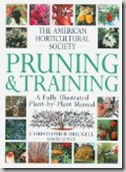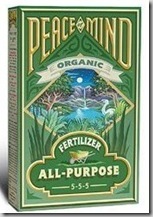The introduction to this series is here.
Preventing pests with good gardening habits is the first step towards having healthy roses and flowers. Healthy plants are a lot less likely to get diseases, while sickly plants become overrun by problems very quickly. Not only that, attending to the basics of a healthy garden will get you better blooms, prettier foliage, and less maintenance overall.
Good care starts with composty soil, regular deep watering (of the soil, not the foliage!), and a thick layer of mulch. Good soil and water allows plants to get the nutrients they need to put up their own defense against disease, while wood chip mulch keeps soil-borne diseases from splashing back onto roses’ leaves when you water or when it rains.
Make sure roses are getting enough light. Roses (almost universally) need at least 6 hours per day of good sunshine from spring to fall, and more sun is even better. If plants don’t get enough light, they produce softer, fleshier growth that is much easier for sucking insects like aphids to puncture and feed on.
Read this article if you’re confused about the difference between full sun, part sun, part shade, and shade.
Rake leaves and petals from below any plants that regularly get diseases. A layer of diseased leaves on the ground can act as a great place for bugs to find shelter and breed.
I try to take any diseased clippings off-site to my city’s green waste drop-off, because home compost doesn’t get hot enough to kill most pests.
Prune your plants properly. This doesn’t need to be intimidating – the plants will often show you what they want done to them. Perennials will often die back totally, so just remove their dead foliage so bad bugs don’t hang out in it all winter. Go here to learn how to prune roses.
 As for shrubs and other plants, I just consult my favorite pruning book, Pruning and Training by Brickell and Joyce. It has diagrams and photos showing the basic steps, then a plant encyclopedia with listings for just about every plant I have encountered that tells you how and when to prune, along with any warnings of what not to do. My copy is splattered with mud – I take it everywhere at certain times of the year.
As for shrubs and other plants, I just consult my favorite pruning book, Pruning and Training by Brickell and Joyce. It has diagrams and photos showing the basic steps, then a plant encyclopedia with listings for just about every plant I have encountered that tells you how and when to prune, along with any warnings of what not to do. My copy is splattered with mud – I take it everywhere at certain times of the year.
Don’t take the hedging shears to plants that aren’t meant to be hedged. Hedging produces a lot of soft, succulent re-growth that is very susceptible to bugs and diseases, and plants that we think of as good for clipping as a hedge are usually things with waxy leaves (a good disease-resister!) or plants that are very tough and pest-resistant.
Don’t over-fertilize. Once again, this is all about keeping growth moderately-paced so it has time to harden off and resist bugs and disease on its own. Using too much fertilizer can create very soft leaves that are easy for bugs to munch.
 I also prefer to use an organic fertilizer (look for ingredients like blood meal, bone meal, alfalfa meal, etc), because they release into the soil slowly and are available when the plants need it.
I also prefer to use an organic fertilizer (look for ingredients like blood meal, bone meal, alfalfa meal, etc), because they release into the soil slowly and are available when the plants need it.
Synthetics that you mix with water are there in a too-large dose for a day or two, and then they move downwards through the soil and are gone. It’s like taking a bottle of vitamins on the 1st and then not taking any for the rest of the month. Not good.
Space plants out well so that they get enough air and light. Air flow and light helps plants harden off their leaves so they resist pests.
It’s tough to know sometimes how large a perennial will spread, so if you have plants that are co-mingling to the point where they are well and truly tangled, consider pruning them back or moving them away from plants that often get pest problems.
Use a dormant spray on your roses after pruning in winter. People with fruit trees will be familiar with the idea of using a preventive lime-sulfur and dormant oil spray in winter. You can use the same products on your roses after you prune, when they are leafless.
The lime-sulfur kills overwintering fungus and bugs while the oil smothers insect eggs. A note: they are considered organic for people growing organic produce, but the oil is made from petroleum products. I think using them is a great way to prevent problems.
These steps will reduce the pest problems you’ll experience, but what if you still need to spray? Read this article to learn how to get rid of pest problems without hurting the environment.
[print_link]
3 responses to “How to Treat Rose and Flower Pests Naturally: Prevention”
Another consideration is companion planting. Companion planting recognizes that certain vegetables provide benefits to one another, while others compete. This can be a function of shading help from a taller variety, nitrogen fixation or pest protection. This is not a new concept–much research has been applied over decades to help you organize your garden for optimal health.
For example, tomatoes like to be near asparagus, carrot, onion and cucumber, but not near cabbage, potatoes or corn. And we all thought they had no feelings!
[…] course, prevention of pests and attraction of beneficials using plants can also help reduce the need for pesticides, as can the […]
[…] you’ve tried to prevent rose problems with the tips in this article, but still ended up with some pests (it happens!), here are the methods I recommend to get rid of […]